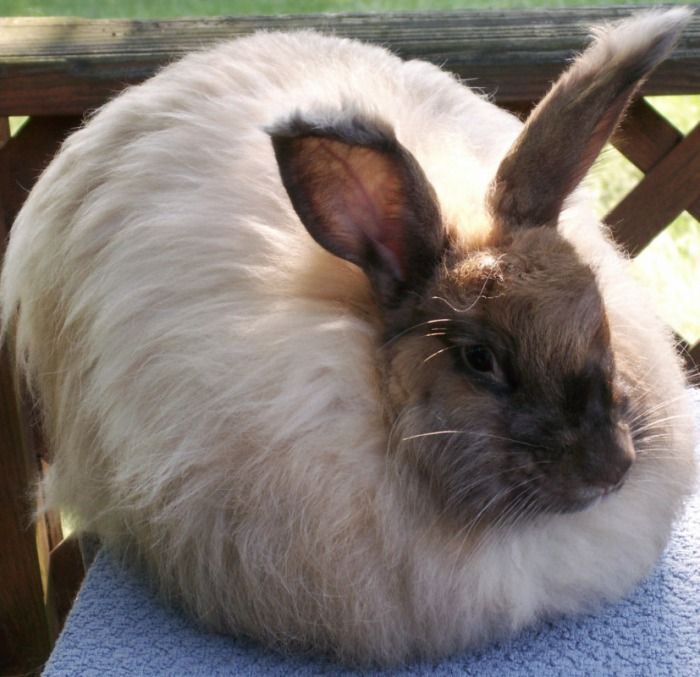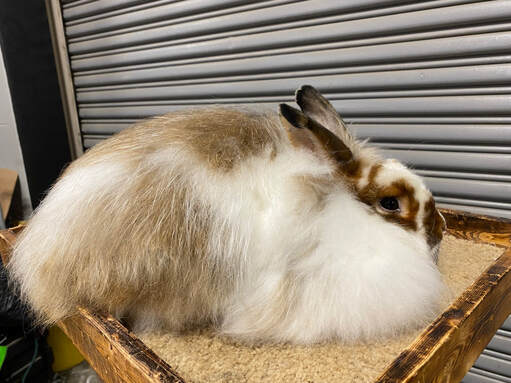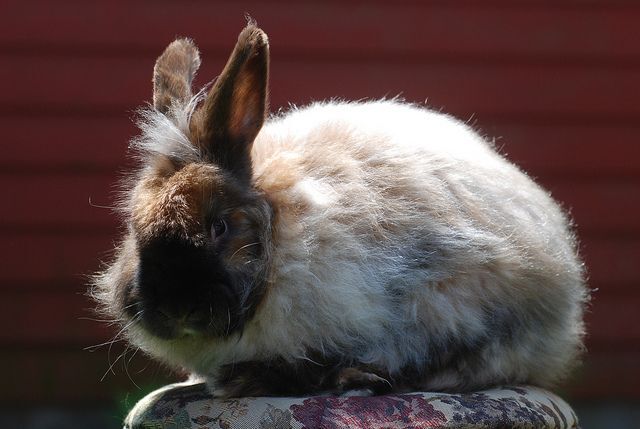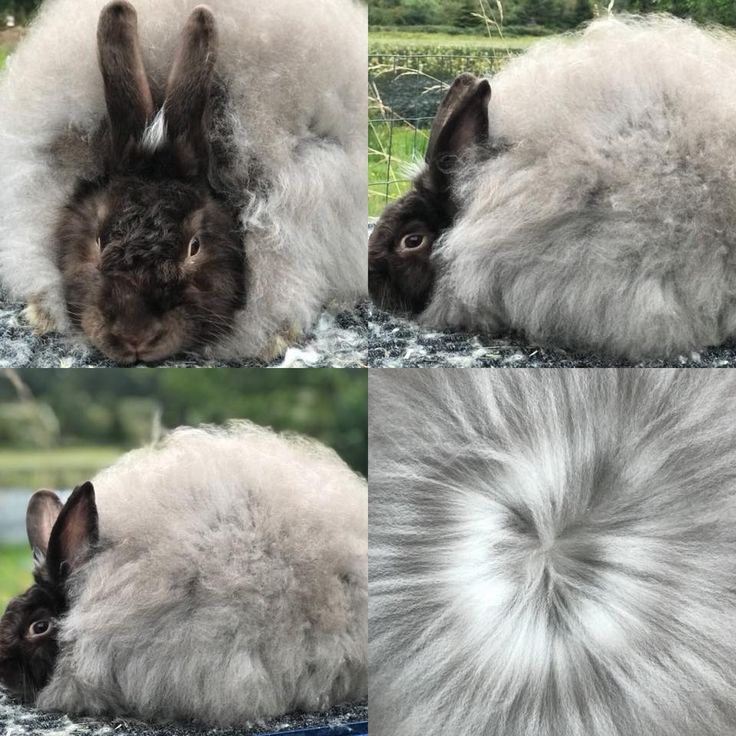The Satin Angora Rabbit is a beautiful, fluffy breed known for its silky fur and friendly nature. They are famous among rabbit lovers, especially for their wool, often used in spinning and knitting. In this blog, we will explore everything you need to know about this rabbit, from its unique traits to how to care for one. Whether you’re new to rabbits or have owned one, this guide will help you understand the Satin Angora Rabbit better.
Satin Angora Rabbit Breed Characteristics
The Satin Angora Rabbit has a soft and shiny coat that looks like silk. This smooth feel comes from a special fur mutation that makes their hair finer than other breeds. They weigh between 3.5 to 9.5 pounds and have a round body with big, bright eyes.
Their coat comes in different colors, like white, black, blue, chocolate, and lilac. These rabbits are popular for their wool, which is softer and warmer than many other kinds of wool. People often use this wool to make high-quality yarns.
Key Characteristics:
- Weight: 3.5 to 9.5 pounds
- Coat Colors: White, black, blue, chocolate, lilac
- Wool Quality: Soft, silky, and warm
- Lifespan: 7 to 12 years
How Much Do These Rabbits Cost?
The price of a Satin Angora Rabbit depends on where you buy it. They can cost between $50 to $200. If the rabbit is bred for wool production or shows, the price might be higher because of its fur quality and pedigree.
It’s important to remember that buying a rabbit is just the beginning. You’ll also need to budget for food, grooming tools, and vet care. Since Satin Angoras need regular grooming, you might need to buy special brushes and other tools.
Cost Breakdown:
- Average Price: $50 to $200
- Ongoing Costs: Food, grooming tools, vet care
Personality and Intelligence of the Satin Angora Rabbit
Satin Angora Rabbits are gentle, friendly, and like to spend time with people. They might be shy at first in a new home, but once they get comfortable, they can be very affectionate. These rabbits enjoy being petted and can bond closely with their owners.
In terms of intelligence, they are quite smart. You can teach them simple tricks, like using a litter box or coming when called. With patience and positive reinforcement, like treats, they can learn new things easily.
Key Traits:
- Temperament: Gentle, friendly, social
- Intelligence: Can learn simple tricks and commands
- Best For: Families, individuals interested in wool-producing pets
Things to Know When Owning a Satin Angora Rabbit:
1. Food & Diet Requirements
Satin Angora Rabbits need a healthy diet to stay strong and energetic. Their diet should mainly consist of hay, which helps their digestion and keeps their teeth from getting too long. Fresh vegetables, like leafy greens (spinach, kale), should also be given every day. You can also provide them with a small portion of rabbit pellets as part of their daily diet.
Always provide clean, fresh water. Be careful with sugary fruits as treats—too many can cause health problems like obesity and dental issues.
Diet Essentials:
- Hay: Unlimited
- Fresh Vegetables: Leafy greens like spinach and kale
- Pellets: Small amount daily
- Water: Fresh and clean at all times
Fruits for Satin Angora Rabbits
Vegetables for Satin Angora Rabbits
- Cucumbers
- Carrots
- Cabbage
- Broccoli
- Lettuce
- Kale
- Tomatoes
- Asparagus
- Catmint
- Celery
- Bell Peppers
- Green beans
- Spinach
2. Exercise & Sleeping Needs
Satin Angoras need space to hop and play. If they’re kept inside, make sure they get time outside their cage to explore. Without enough exercise, they can become overweight. A safe, rabbit-proofed room or a fenced outdoor area is great for them.
Rabbits are crepuscular, meaning they are most energetic during the early morning and late evening hours. Rabbits are crepuscular, meaning they are most energetic during the early morning and late evening hours. They’ll sleep during parts of the day and night, so provide a quiet place for them to rest.
Exercise Needs:
- Time to explore and hop around
- Safe, supervised outdoor or indoor space
3. Training
You can train Satin Angoras to use a litter box and even respond to their name. Start with small, simple tasks, and use treats to reward them. Be patient—rabbits can learn, but it may take some time.
Training Tips:
- Start with litter box training
- Reward with treats and praise
- Stay patient and consistent
4. Grooming
Satin Angora Rabbits have long, silky fur that requires regular grooming. You should brush them at least once a week, but during shedding season, they may need more frequent grooming to prevent their fur from matting.
Also, be mindful of their nails, which need regular trimming. Checking their ears for any signs of infection is also a good practice. One common issue is wool block, which occurs when they ingest too much fur while grooming. Make sure to keep them well-brushed and give them a diet high in fiber to avoid this.
Grooming Essentials:
- Brush weekly (more during shedding)
- Trim nails regularly
- Check ears for infections
Health: Lifespan and Health Conditions
Satin Angora Rabbits generally live between 7 to 12 years. They can face some health problems if not properly cared for, so regular vet checkups are necessary.
Common Health Issues:
- Wool Block: This happens when they eat too much of their fur while grooming. Wool block can cause serious digestive problems. To prevent it, keep them well-groomed and feed them plenty of hay to help their digestion.
- Dental Problems: Like many rabbits, Satin Angoras have teeth that keep growing. If their teeth grow too long, they may have trouble eating. Make sure they have enough hay to chew on, which helps to wear down their teeth naturally.
- Obesity: Lack of exercise or an unhealthy diet can lead to obesity, so ensure they have a balanced diet and enough room to move around.

How to Keep Them Healthy:
- Feed them a high-fiber diet (mainly hay)
- Brush them regularly to prevent wool block
- Provide regular vet checkups
- Make sure they get enough exercise
5. Male vs Female
When choosing between a male (buck) or female (doe) Satin Angora Rabbit, there are a few differences. Males are usually more laid-back and less territorial, while females can be more independent but still affectionate once they trust their environment.
Spaying or neutering your rabbit is a good idea to prevent certain health issues and reduce territorial behavior.
Key Differences:
- Male: More laid-back, less territorial
- Female: Independent, affectionate when comfortable
Fun Facts About Satin Angora Rabbits
- Wool Spinning: The wool from Satin Angora Rabbits is so soft that it’s commonly spun into luxurious yarn for knitting.
- Shedding Time: They shed every three months, which is the perfect time to collect wool for spinning.
- Royal Rabbits: Angora rabbits were kept as pets by French royalty in the 1700s.
- Big Hoppers: Satin Angoras love to hop and are very agile when they play.
- Wool Production: One rabbit can produce enough wool each year to make several scarves or hats!
Conclusion
Owning a Satin Angora Rabbit is a delightful experience. With their soft, shiny coats and friendly personalities, they make wonderful pets and wool producers. They do need regular grooming and care, but with the right attention to their diet, exercise, and health needs, these rabbits can live a long and happy life.
Whether you’re looking for a loving companion or a rabbit that produces high-quality wool, the Satin Angora Rabbit is a fantastic choice. By following this guide, you’ll ensure that your Satin Angora Rabbit stays healthy, happy, and full of energy!
FAQs
- How much does a Satin Angora Rabbit cost? Satin Angora Rabbits typically cost between $50 to $200, depending on their quality and breeder.
- What are the characteristics of a Satin Angora Rabbit? Satin Angoras have soft, silky fur with a lustrous sheen, weigh between 3.5 to 9.5 pounds, and come in a variety of colors.
- Is Angora rabbit expensive? Angora rabbits can be considered expensive, especially for those bred for high-quality wool, with prices ranging up to $200 or more.
- Can Angora rabbits live indoors? Yes, Angora rabbits can live indoors, but they need space to move around and regular grooming due to their thick fur.
- Are Angora rabbits friendly? Angora rabbits are generally gentle and friendly, often forming close bonds with their owners.
- What are the disadvantages of Angora rabbits? Angora rabbits require frequent grooming, can suffer from wool block, and need regular care to prevent health issues like obesity and dental problems.
- Is Angora rabbit rare? While not extremely rare, certain types of Angora rabbits, like the Satin Angora, are less common and highly valued for their wool.
Further Reading
Are Bunnies Rodents?
Are Rabbits Nocturnal?
Do Rabbits Hibernate?
How Many Rabbits in a Litter?
What Does Rabbit Poop Look Like?
What Does Rabbit Taste Like?
Do Rabbits Lay Eggs?
What Is a Group of Rabbits Called?
What is Young Rabbit Called?





Leave a Reply